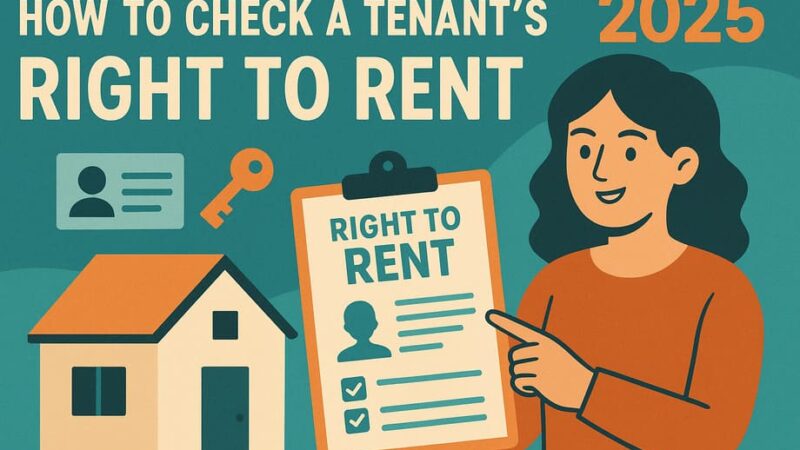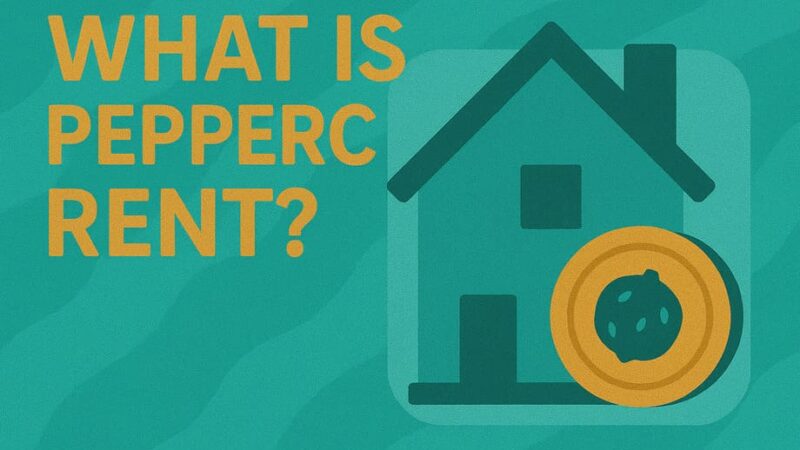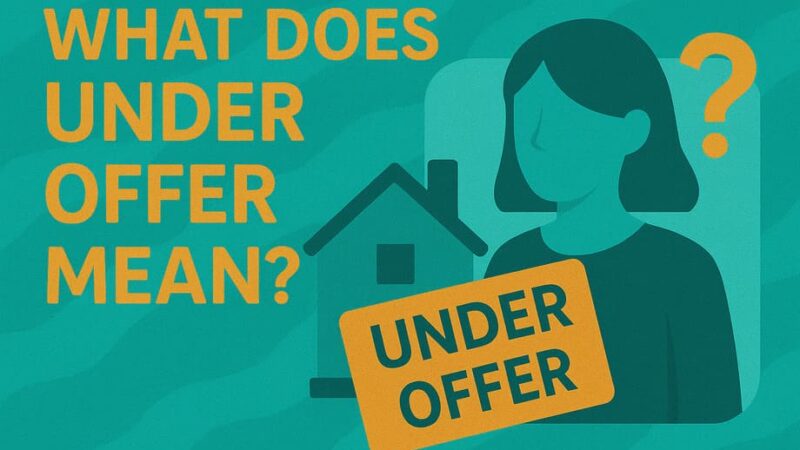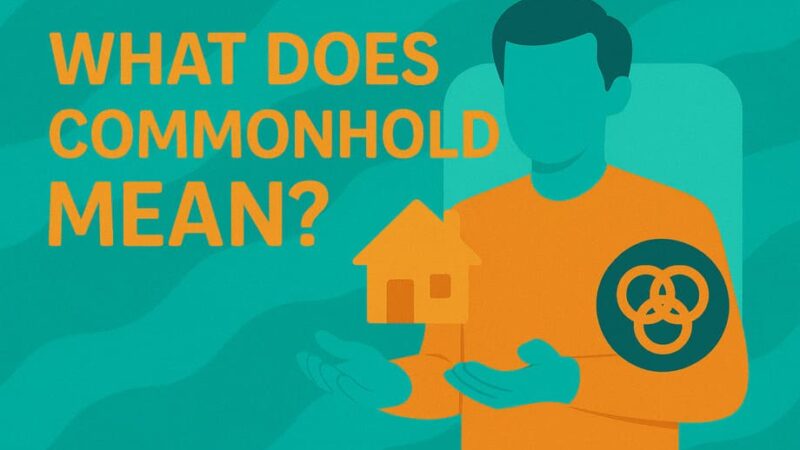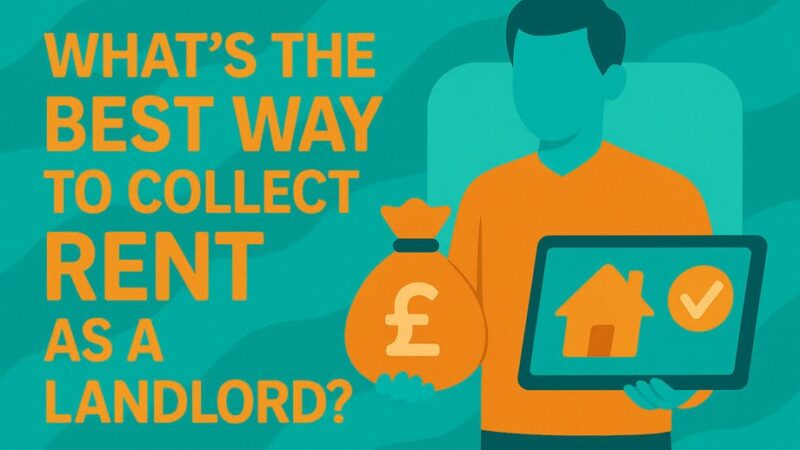Tax on Rental Income – A Complete Guide for UK Landlords & Property Investors
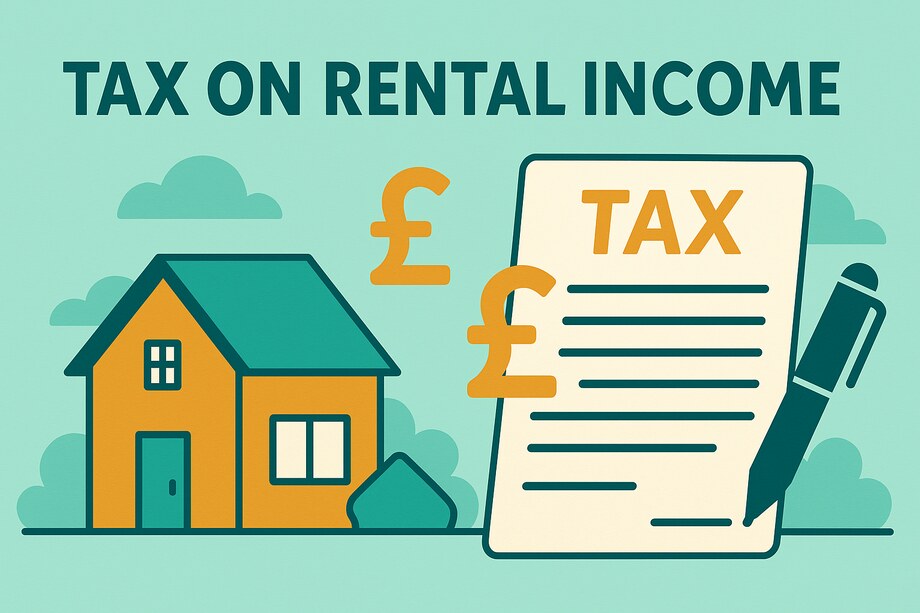
Property investment has become increasingly popular across the UK, with millions of landlords generating substantial income from rental properties. However, navigating the tax obligations that come with rental income can be challenging, especially given the significant changes to landlord taxation over recent years.
Whether you’re a first-time buy-to-let investor or managing a growing property portfolio, understanding how rental income taxation works is crucial for maximizing your returns and staying compliant with HMRC requirements.
Do You Pay Tax on Rental Income?
Yes, you pay tax on rental income in the UK. All landlords and property investors must pay income tax on profits generated from rental properties. This isn’t a separate “landlord tax” – it’s simply standard income tax applied to your rental property profits.
Is rental income taxable? Absolutely. HMRC treats rental income as taxable income, and you must declare it if it exceeds certain thresholds. The tax applies to your net rental income (profit after allowable expenses), not the gross rent you receive.
Key Tax Obligations for Property Investors:
- Income tax on rental profits (0%, 20%, 40%, or 45%)
- Capital gains tax when selling investment properties
- Stamp duty surcharge on additional property purchases
- Council tax for vacant properties (if applicable)
- National insurance on rental income (only in specific circumstances)
How Much Tax Do You Pay on Rental Income?
How much tax do you pay on rental income? Your rental income tax rate depends on your total taxable income for the year, including employment wages, pension income, and rental profits combined. The taxation of rental income follows standard UK income tax rates.
UK Income Tax Rates 2025/26
| Income Band | Annual Income Range | Tax Rate |
|---|---|---|
| Personal Allowance | £0 – £12,570 | 0% |
| Basic Rate | £12,571 – £50,270 | 20% |
| Higher Rate | £50,271 – £125,140 | 40% |
| Additional Rate | Over £125,140 | 45% |
Rental Income Tax Calculator Examples
Understanding how to calculate tax on rental income is crucial for property investors. Here are practical examples showing different scenarios:
Example 1: Basic Rate Taxpayer
- Employment income: £25,000
- Rental income: £8,000
- Rental property expenses: £2,500
- Taxable rental income: £5,500
- Total taxable income: £30,500
- Tax on rental profit: £1,100 (20%)
Example 2: Higher Rate Taxpayer
- Employment income: £55,000
- Rental income: £15,000
- Rental property expenses: £4,000
- Taxable rental income: £11,000
- Total taxable income: £66,000
- Tax on rental profit: £4,400 (40%)
Important: These examples show how much tax you pay on rental income UK varies significantly based on your total income levels.
Buy to Let Tax Relief and Changes
Buy to let tax relief has undergone significant changes, particularly affecting buy to let mortgage tax relief. Understanding these buy to let tax changes is essential for property investors.
What Rental Income Must Be Declared?
Understanding what constitutes taxable rental income is essential for accurate reporting. It’s broader than many investors realize.
Primary Rental Income Sources:
- Monthly/weekly rent payments
- Holiday let income (Airbnb, short-term lets)
- Parking space rentals
- Storage facility income
- Room rentals in your main residence
Additional Income That Counts:
- Service charges for cleaning or maintenance
- Utility bill contributions from tenants
- Non-refundable deposits and administration fees
- Forfeited security deposits for damages or cleaning
- Premium payments for lease assignments
Practical Example:
If you charge £1,500 monthly rent plus £200 for utilities, your total monthly rental income is £1,700, not £1,500. If you keep £800 from a tenant’s deposit for repairs at tenancy end, this additional amount counts as rental income for that tax year.
Allowable Expenses for Rental Income
What expenses can landlords claim? Maximizing your allowable expenses for rental income is crucial for reducing your taxable rental income. However, expenses must be “wholly and exclusively” for your rental business to qualify as rental income allowable expenses.
Essential Allowable Expenses for Landlords:
Property Management & Administration
- Letting agent fees and commissions
- Property management company charges
- Legal fees for tenancy agreements (under 12 months)
- Accountancy and bookkeeping costs
- Landlord insurance premiums
Maintenance & Repairs
- Routine maintenance and repairs
- Emergency repair costs
- Garden maintenance and landscaping
- Cleaning between tenancies
- Safety certificate costs (gas, electrical, EPC)
Utilities & Services
- Gas, electricity, and water bills (if landlord pays)
- Internet and telephone services for properties
- Council tax (for vacant periods)
- Buildings and contents insurance
- Ground rent and service charges
Marketing & Professional Costs
- Advertising for new tenants
- Tenant referencing and credit checks
- Inventory preparation and updates
- Professional photography for listings
- Property investment software subscriptions
What You Cannot Claim:
Capital Improvements
- Kitchen or bathroom renovations
- Loft conversions or extensions
- Replacing basic carpets with hardwood flooring
- Installing new central heating systems
Personal Expenses
- Travel costs for personal property viewings
- Clothing or personal equipment
- Mixed-use items (unless properly apportioned)
- Initial purchase costs and legal fees
Replacement of Domestic Items Relief
Since April 2016, landlords can claim “replacement of domestic items relief” for furnished properties. This covers:
- Furniture (beds, sofas, tables, chairs)
- Appliances (washing machines, fridges, cookers)
- Furnishings (curtains, carpets, blinds)
- Equipment (televisions, vacuum cleaners)
The original item must be completely replaced and removed from the property to qualify.
How to Avoid Paying Tax on Rental Income (Legally)
Many landlords ask “how can I avoid paying tax on rental income?” While you cannot completely avoid tax obligations, there are several legitimate strategies to minimize your tax on rental income.
Legal Tax Minimization Strategies:
Maximize Allowable Expenses
- Claim all legitimate rental property expenses
- Keep detailed records of allowable expenses for landlords
- Understand repair vs improvement distinctions
- Use rental property tax deductions effectively
Optimize Property Allowance vs Expenses
- Calculate both methods annually
- Property income allowance provides £1,000 tax-free income
- Choose the most beneficial option each year
Consider Buy to Let Tax Relief Options
- Rent a room tax relief for properties in main residence
- Buy to let mortgage tax relief through 20% credit system
- Capital allowances for furnished holiday lets
Strategic Timing
- Time major expenses to optimize tax years
- Plan property purchases and sales carefully
- Consider buy to let tax changes in investment decisions
Buy to Let Tax Calculator Examples
Buy to let tax calculator scenarios help illustrate potential tax savings:
How Buy to Let Taxation Has Changed:
The Old System (Pre-2017): Landlords could deduct full mortgage interest on rental property as a business expense, reducing their taxable rental income pound-for-pound.
Current System (2020 Onwards): Section 24 restrictions now limit mortgage interest deduction rental property to a 20% tax credit, regardless of your marginal tax rate.
How Tax Relief on Buy to Let Mortgages Works Now:
- Calculate gross rental profit (income minus expenses, excluding mortgage interest)
- Pay income tax on full gross profit at your marginal rate
- Receive 20% tax credit on mortgage interest payments
- Credit reduces your final tax bill
Buy to Let Tax Calculator Impact Example:
Higher-Rate Taxpayer Buy to Let:
- Rental income: £20,000
- Other expenses: £4,000
- Mortgage interest on rental property: £8,000
- Gross rental profit: £16,000
Tax Calculation:
- Income tax (40%): £16,000 × 40% = £6,400
- Mortgage interest tax credit: £8,000 × 20% = £1,600
- Final tax bill: £4,800
Under the old buy to let tax relief system, this landlord would have paid tax on £8,000 profit, resulting in £3,200 tax. The new system increases their tax bill by £1,600.
When Must I Register and File Returns?
How to declare rental income depends on the amount you receive. HMRC has specific thresholds and deadlines for declaring rental income, with penalties for non-compliance.
Declaring Rental Income Requirements:
| Annual Rental Income | Action Required |
|---|---|
| Under £1,000 | No reporting needed (if using property allowance) |
| £1,000 – £2,500 | Contact HMRC directly |
| £2,500 – £9,999 | Register for Self Assessment rental income |
| £10,000+ (before expenses) | Must complete full property pages |
Critical Deadlines for Rental Income Tax Return:
- Registration deadline: 5 October following the tax year
- Paper return deadline: 31 October
- Online return deadline: 31 January
- Payment deadline: 31 January
- Second payment on account: 31 July (if applicable)
Self Assessment for Property Income Record Keeping:
You must maintain detailed records for at least 5 years after the filing deadline, including:
- All rental income receipts and bank statements
- Expense receipts and invoices
- Tenancy agreements and deposit records
- Mortgage statements and finance documentation
- Mileage logs for property-related travel
Property Income Allowance vs Actual Expenses
What is property income allowance? The £1,000 property income allowance gives investors a choice between simplified and detailed expense reporting. Understanding how much rental income is tax free through this allowance is important for tax planning.
Option 1: Property Income Allowance
- Claim £1,000 tax-free rental income
- No expense deductions permitted
- Ideal for: Small-scale landlords with minimal costs
Option 2: Actual Expenses
- Deduct all legitimate business expenses
- No property allowance available
- Better for: Most property investors with significant costs
Tax Free Rental Income Decision Example:
Property A:
- Rental income: £8,000
- Actual expenses: £1,500
Using allowance: Taxable income = £7,000 (£8,000 – £1,000) Using expenses: Taxable income = £6,500 (£8,000 – £1,500)
Result: Claiming actual expenses saves tax on an additional £500.
Joint Ownership and Property Income Allowance:
For jointly-owned properties, each owner can claim their own £1,000 allowance against their share of rental income, potentially providing £2,000 total allowance for married couples or civil partners.
Managing Multiple Property Portfolios
Investors with multiple properties benefit from simplified administration but must understand how income and losses are calculated across their portfolio.
Portfolio Tax Rules:
UK Properties
- All UK rental income and expenses are combined as one business
- Losses from one property automatically offset profits from others
- Overall profit or loss determines your tax liability
Overseas Properties
- Must be kept separate from UK property income
- Cannot offset UK losses against overseas profits
- Subject to separate tax calculations and potential double taxation
Portfolio Loss Management:
Year 1 Portfolio Results:
- Property A profit: £3,000
- Property B profit: £2,500
- Property C loss: £4,000
- Net portfolio result: £1,500 profit
Tax is paid only on the £1,500 net profit, not the individual property profits.
Carrying Forward Losses:
If your total property portfolio makes a loss, you can:
- Carry forward losses to offset future rental profits
- Cannot offset rental losses against employment or other income
- Use losses indefinitely against future property profits
Limited Company Property Investment
Many investors, particularly higher-rate taxpayers, consider holding properties through limited companies for tax efficiency.
Limited Company Advantages:
Corporation Tax Benefits
- 19% rate on profits up to £50,000 (2025/26)
- 25% rate on profits over £250,000
- Marginal relief for profits between £50,000-£250,000
Mortgage Interest Relief
- Full mortgage interest deduction still available
- No Section 24 restrictions apply to companies
- Particularly beneficial for highly leveraged investments
Profit Extraction Flexibility
- Salary and dividend combinations for tax efficiency
- Timing control over profit extraction
- Reinvestment opportunities within the company
Limited Company Considerations:
Additional Costs
- Annual filing requirements with Companies House
- Corporation Tax returns and compliance costs
- Professional fees for accounting and administration
Exit Strategies
- Capital gains tax on share sales rather than property sales
- Entrepreneur’s Relief potentially available
- Inheritance tax planning considerations
Company vs Personal Ownership Example:
£30,000 annual rental profit scenario:
Personal Ownership (Higher-Rate Taxpayer):
- Income tax: £30,000 × 40% = £12,000
- Net after tax: £18,000
Limited Company:
- Corporation tax: £30,000 × 19% = £5,700
- Retained in company: £24,300
The company structure saves £6,300 in tax, though profit extraction will incur additional personal tax liability.
Common Tax Mistakes to Avoid
Learning from others’ mistakes can save you significant penalties and additional tax liabilities.
Mistake 1: Late Registration
Many new landlords miss the 5 October registration deadline, resulting in automatic penalties even before filing their first return.
Solution: Register for Self Assessment immediately when you start receiving rental income over £1,000.
Mistake 2: Claiming Capital Improvements as Expenses
Confusing repairs with improvements is costly. Replacing a broken boiler is a repair; upgrading to a more efficient system is an improvement.
Solution: Understand the repair vs improvement distinction and keep capital expenditure records for future capital gains tax calculations.
Mistake 3: Mixed Personal and Business Use
Claiming full costs for items used personally and for rental business violates HMRC rules.
Solution: Only claim the business portion of mixed-use items and maintain clear records showing the split.
Mistake 4: Inadequate Record Keeping
Poor record keeping leads to missed deductions and difficulties during HMRC investigations.
Solution: Implement a systematic approach using dedicated bank accounts and digital record-keeping tools.
Mistake 5: Misunderstanding Mortgage Interest Relief
Many landlords still believe they can deduct full mortgage interest as an expense under the current rules.
Solution: Understand the 20% tax credit system and factor this into investment calculations.
Do You Pay National Insurance on Rental Income?
National insurance on rental income is a common question for landlords. Generally, you do not pay national insurance on rental income as it’s considered investment income, not earnings from employment or self-employment.
When National Insurance Rental Income Might Apply:
- Property management businesses providing additional services
- Bed and breakfast operations or hotel-style businesses
- Furnished holiday lettings in some circumstances
- Commercial property management with extensive services
For most buy-to-let landlords, rental income remains exempt from National Insurance contributions.
Rent a Room Allowance Considerations
If you’re renting out part of your main residence, the Rent a Room Scheme offers significant tax advantages and tax relief for renting a room.
Rent a Room Relief Benefits:
- £7,500 annual allowance (tax year 2025/26)
- £3,750 each if sharing income with spouse/partner
- Automatic exemption if income below threshold
- Optional scheme – can choose actual expenses if beneficial
Rent a Room Tax Relief Eligibility:
- Must be furnished accommodation
- In your main residence only
- Available to UK residents only
- Cannot be separate self-contained unit
This provides an excellent way to earn tax free rental income up to the allowance threshold.
Making Tax Digital (MTD) Compliance
From April 2026, property investors with income over £50,000 must comply with Making Tax Digital for Income Tax.
MTD Requirements:
- Quarterly digital submissions to HMRC
- MTD-compatible software for record keeping
- Annual submission by 31 January deadline
- Digital links between different software systems
Preparation Steps:
- Choose compatible software for property management
- Digitize existing records and processes
- Test quarterly submission procedures
- Train team members on new requirements
Professional Support and Resources
Given the complexity of property taxation, many investors benefit from professional guidance.
When to Seek Professional Help:
- Multiple property portfolios with complex structures
- Higher-rate taxpayers considering company structures
- International property investments
- Significant capital gains on property sales
- HMRC investigations or disputes
Choosing Professional Support:
- Qualified accountants with property specialization
- Chartered Tax Advisers for complex situations
- Property investment specialists familiar with current legislation
- Annual review meetings to optimize tax efficiency
Future Tax Planning Considerations
Property taxation continues evolving, making forward planning essential for long-term success.
Potential Future Changes:
- Corporation tax rate adjustments affecting company ownership
- Capital gains tax rates on property disposals
- Stamp duty threshold changes for additional properties
- Energy efficiency requirements affecting allowable expenses
Strategic Planning Areas:
- Ownership structure reviews for tax efficiency
- Portfolio rebalancing to optimize tax positions
- Succession planning for inheritance tax mitigation
- Exit strategy preparation for capital gains optimization
Conclusion
Understanding tax on rental income is fundamental to successful property investment in the UK. The landscape has changed significantly over recent years, particularly around mortgage interest relief, making it more important than ever to stay informed and compliant.
Key takeaways for property investors:
- Rental profits are taxed as income at your marginal rate (20%, 40%, or 45%)
- Mortgage interest relief is now limited to a 20% tax credit
- Detailed record keeping is essential for maximizing allowable expenses
- Property allowance provides £1,000 tax-free income for smaller landlords
- Limited company structures can offer tax advantages for higher-rate taxpayers
- Professional advice is valuable for complex situations and optimization
The property investment landscape remains attractive despite tax changes, but success requires proper planning, accurate record keeping, and staying current with evolving regulations. Whether you’re starting with a single buy-to-let property or managing an extensive portfolio, understanding these tax obligations will help you maximize returns while maintaining full compliance with HMRC requirements.
Regular reviews of your property tax position, combined with professional guidance when appropriate, will ensure you’re making the most of available reliefs and allowances while positioning your investments for long-term success.
This guide provides general information about property taxation as of August 2025. Tax rules are complex and change frequently. Always consult with a qualified tax advisor or accountant for advice specific to your circumstances.
Last Updated on August 22, 2025 by James Cartwright



